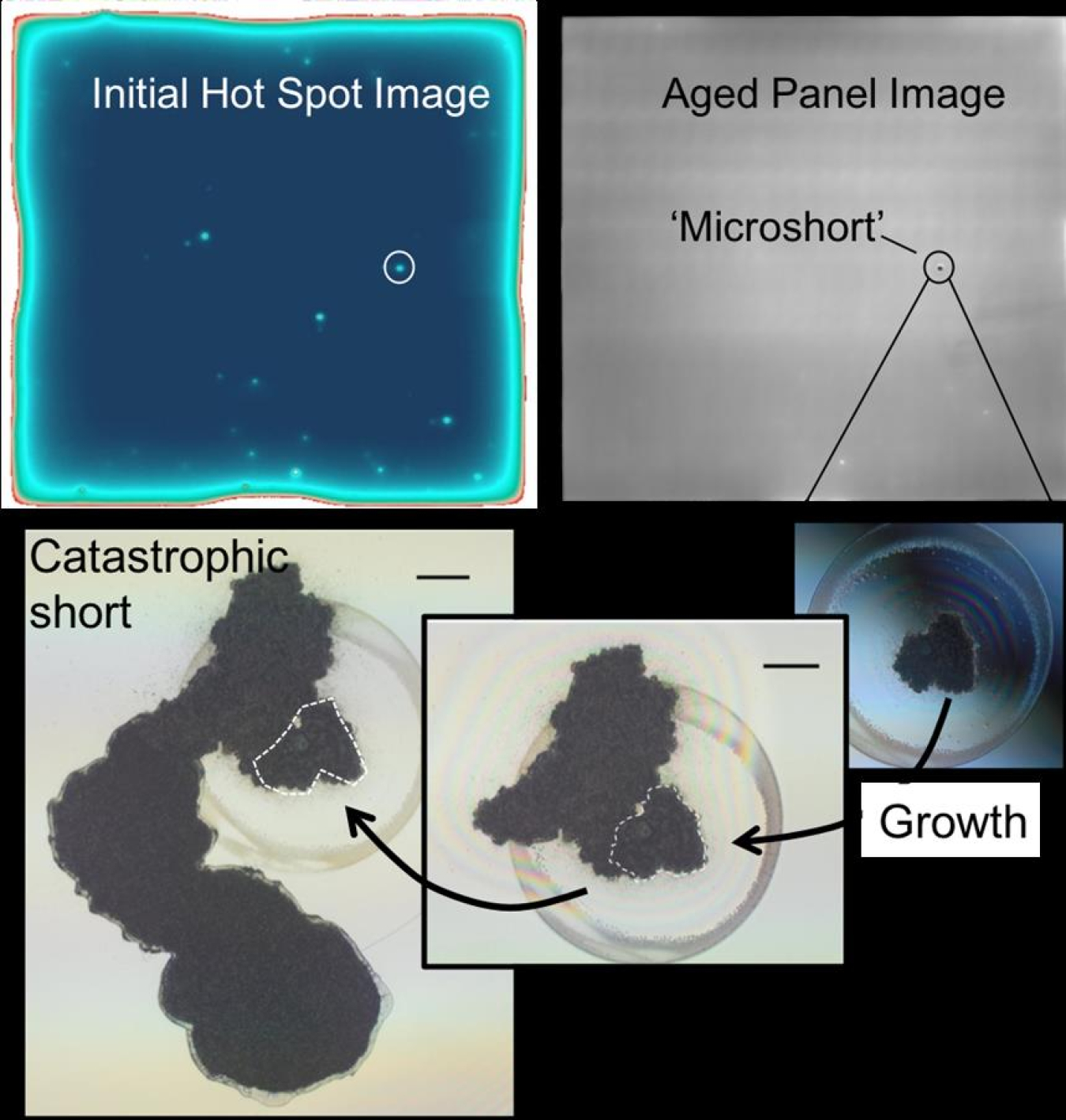In the past, too many organic light-emitting diode (OLED) panels shorted catastrophically before their rated 50,000-hour lifetime.
July 3, 2018In the past, too many organic light-emitting diode (OLED) panels shorted catastrophically before their rated 50,000-hour lifetime. Actions to mitigate shorting have been taken by all panel manufacturers, but the origin of shorts is unknown. More improvement is needed to increase manufacturing yield and customer satisfaction, and decrease warranty expenses. Defects due to shorting are the most pressing reliability-related challenge for OLED lighting today.
With the help of DOE funding, researchers at Penn State University are developing a basic scientific understanding of how shorts originate and grow to a catastrophic level, thus causing device failure. The project focuses on identifying the physical origin of the short, modeling the short’s evolution, predicting which panels will fail, and developing mitigation strategies to reduce shorting. The goal is to reduce panel failure rates to less than 0.01%, per DOE’s failure- rate target. The project’s approach is to locate and profile incipient shorts, conduct a physical analysis of incipient shorts, do modeling and validation, and develop anti-shorting strategies.

An initial defect identified in the screening of an entire panel (top left) turns into a larger defect after aging the panel (top right) and eventually grows to become a catastrophic short (clockwise around the other images).
Based on their observations to date, the researchers now have a working model in which incipient shorts manifest earliest as “hot spots,” and they are able to screen OLED panels with a hot-spot imaging technique to determine the location of these microscopic defects. Having come to understand their physical origin – which appears to be micron-scale particles of organic matter — the team is pursuing several mitigation strategies that involve changes to the deposition process and that are focused on eliminating the source of the defects and arresting their growth to prevent them from becoming catastrophic.
Return to Research Highlights.

